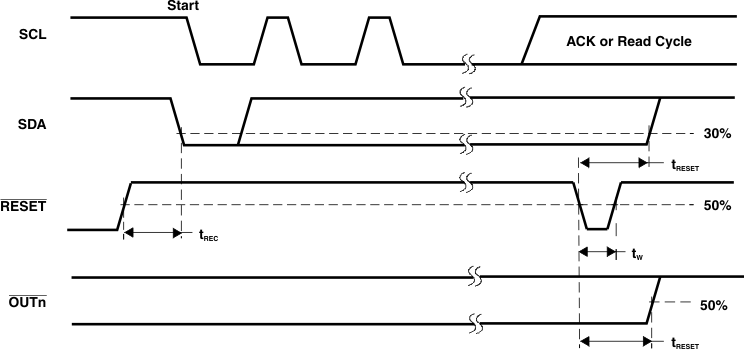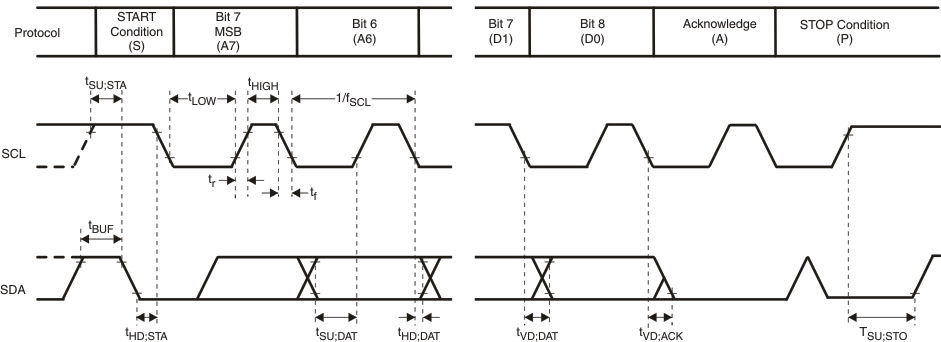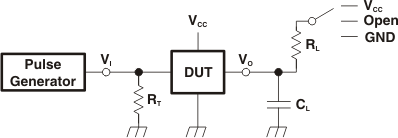SLDS223A March 2016 – March 2016 TLC59116-Q1
PRODUCTION DATA.
- 1 Features
- 2 Applications
- 3 Description
- 4 Revision History
- 5 Description (continued)
- 6 Pin Configuration and Functions
- 7 Specifications
- 8 Parameter Measurement Information
-
9 Detailed Description
- 9.1 Overview
- 9.2 Functional Block Diagram
- 9.3 Feature Description
- 9.4 Device Functional Modes
- 9.5 Programming
- 9.6
Register Maps
- 9.6.1 Mode Register 1 (MODE1)
- 9.6.2 Mode Register 2 (MODE2)
- 9.6.3 Brightness Control Registers 0 to 15 (PWM0 to PWM15)
- 9.6.4 Group Duty Cycle Control Register (GRPPWM)
- 9.6.5 Group Frequency Register (GRPFREQ)
- 9.6.6 LED Driver Output State Registers 0 to 3 (LEDOUT0 to LEDOUT3)
- 9.6.7 I2C Bus Subaddress Registers 1 to 3 (SUBADR1 to SUBADR3)
- 9.6.8 LED All Call I2C Bus Address Register (ALLCALLADR)
- 9.6.9 Output Gain Control Register (IREF)
- 9.6.10 Error Flags Registers (EFLAG1, EFLAG2)
- 10Application and Implementation
- 11Power Supply Recommendations
- 12Layout
- 13Device and Documentation Support
- 14Mechanical, Packaging, and Orderable Information
Package Options
Mechanical Data (Package|Pins)
- PW|28
Thermal pad, mechanical data (Package|Pins)
Orderable Information
8 Parameter Measurement Information
 Figure 5. Reset Timing
Figure 5. Reset Timing
 Figure 6. Definition of Timing
Figure 6. Definition of Timing

NOTE: Rise and fall times refer to VIL and VIH.
Figure 7. I2C Bus Timing

NOTE:
Figure 8. Test Circuit for Switching Characteristics
- RL = Load resistance for SDA and SCL; should be >1 kΩ at 3-mA or lower current
- CL = Load capacitance; includes jig and probe capacitance
- RT = Termination resistance; should be equal to the output impedance (ZO) of the pulse generator